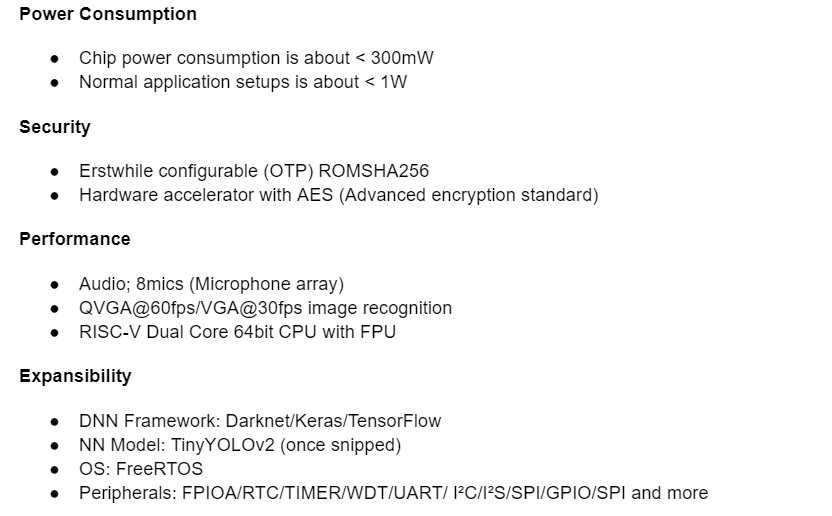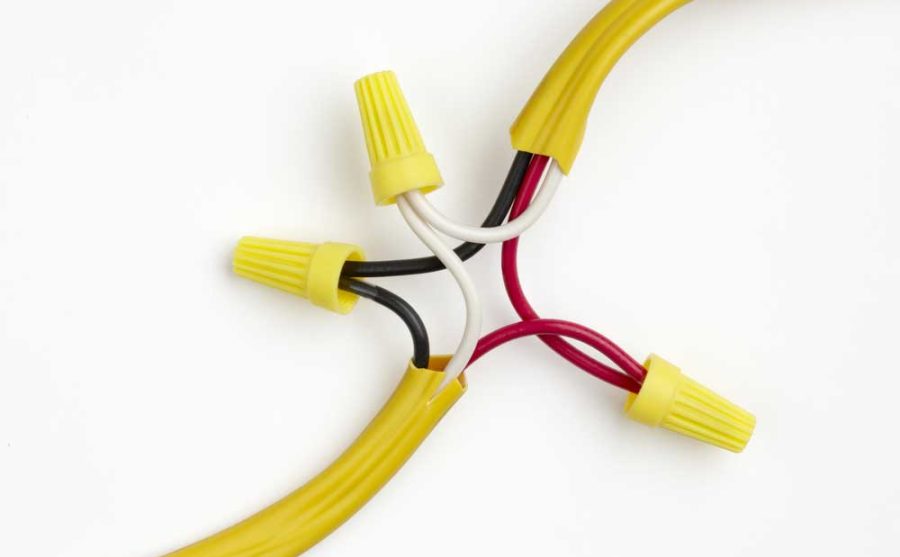Contents
- What is Kendryte K210?
- K210 Main Parameters
- What Can K210 Do: AI Solution
- Machine Vision
- Machine Hearing
- Visual/Hearing Hybrid Solution
- K210 AI Accelerator
- K210 Development Boards
- KD2333 – Dual-Core Risc-V SoC
- Sipeed M1 dock suit ( M1 dock + 2.4 inch LCD + OV2640)
- Sipeed Maixduino Kit for RISC-V AI + IoT
- K210 Programming Environment
- Command-line development environment
- IDE development environment
- MicroPython development environment
- Summary
What is Kendryte K210?
In 2018, Canaan launched a dual-core RISC-V AI processor known as Kendryte K210. Located in the SoC of IoT and AI markets, Kendryte K210 is a very convenient MCU. Also, it's an SoC (system-on-chip) that incorporates appliance hearing and appliance visualization. Again, it uses TSMC's ultra-low-power 28nm progressive development with dual-core 64-bit processors for stability and improved performance. Besides, K210 Kynderyte features a self-developed impartial system hardware accelerator KPU that executes ordinary system setup efficiently. The most impressive component of Kendryte K210 in terms of AI computing is its power computational capabilities. Furthermore, it has a powerful edge-computing chip designed for semantic and visual recognition that works in different settings.

MaixDuino board- AI module K210 Inside
K210 Main Parameters
K210's computing power is relatively impressive. The K210'S KPU features 0.8TOPS power, and its other parameters include;

Special Offer: Get $100 off your order!
Email [email protected] to get started!
What Can K210 Do: AI Solution
Machine Vision

Machine Vision System
When in minimal power situation, K210 executes convolution neural system plans. Equally, it's a zero-threshold vision and entrenched solution with machine vision capabilities. In addition, some of the machines vision capabilities the chip can achieve include;
- Getting the detectable target brand in real-time
- Face recognition and face detention
- Getting the detected target coordinates and scope in real-time
- Image recognition and overall objective detention based on a convolutional neural network operation
Machine Hearing
Machine hearing is another capability Kendryte K210 features. Moreover, for real-time source beamforming and orientation, the chip comes with a microphone collection audio mainframe with high performance.
Furthermore, some of the machine capabilities the chip can achieve include:
- Recognizing speech
- Beamforming
- Imaging sound field
- Voice wake up
- Sound source orientation
Visual/Hearing Hybrid Solution

Male otolaryngologist on hearing test machine
The chip architecture indicates machine hearing capabilities and integration with machine vision to offer various significant structures. First, during the application, you use both sound field imaging and good source localization to track the target. Also, for orientation beamforming, you use hearing aids and ordinary target detention to obtain the orientation target. Contradictorily, you can get the person's direction through a camera-transmitted image sensor. Through beamforming, the microphone array directs to the person. You can determine the speaker's direction based on the microphone array, pointing to the person by rotating the camera.
K210 AI Accelerator
K210 AI Accelerator is a compacted Raspberry Pi HAT. Equally important, it enables the processing power of about 0.5 TOPs (Tera Operations Per Second) by utilizing the Kendryte K210 AI processor. Also, the 65 x 39mm HAT design is equipped with an RPI camera add-on. In addition, it matches well with any 40-pin Raspberry Pi. Even if you aren't sure how to train your model, the HAT allows you to augment AI features to your RPi built camera. Besides, with just a few Python API calls, you can make your camera AI-enabled with the pre-trained models and plugin module.

Source: Wikimedia Commons.
K210 Development Boards

A batch of ready printed circuit development boards
There are various K210 development boards available in the market. Here are the most popular ones:
-
KD2333 – Dual-Core Risc-V SoC
KD233 Kendryte board has (CNN) Convolution Neural Network hardware accelerator features for AI applications. Besides, it is built around Kendryte's K210 dual-core RISC-V processor for machine hearing capabilities and vision features.
-
Sipeed M1 dock suit ( M1 dock + 2.4 inch LCD + OV2640)
Like Maixduino, MAIX Module, the Sipeed M1 uses a similar component. Also known as M1, the Sipeed MAIX-I module incorporates 3-channel DC-DC power and K210 into Square Inch Module. Again, the pin's electrical energy is configurable from 1.8V AND 3.3V while all the working I0 breaks outs as 1.27mm pins.
-
Sipeed Maixduino Kit for RISC-V AI + IoT
Maixduino is a RISC-V 64 dev board based on MAIX Module forAI + IoT applications. Unlike other hardware platforms, Maxiduino open software integrates custom hardware resources and accesses state-of-the-art AI algorithms. In addition, its high performance, low cost, power, and small footprints enable high-quality Edge AI broad deployment.

Sipeed board
Source: Wikimedia Commons.
K210 Programming Environment
There are various programming environments K210 can support, including:
-
Command-line development environment
Standalone and FreeRTOS are the two K210-based development boards that the K210 official SDK supports.
-
IDE development environment
Developing under windows is the easiest and most common way. You only need to have code completion and use an officially provided IDE based on Visual Studio Code.

Visual Studio with Abstract Technology Binary code Background
-
MicroPython development environment
With a command-line development environment and ide developments, you must write code, compile, and start the download process. However, with the Micro Python environment, use the serial port to interrelate with Python after downloading the firmware. Besides, you can boot it after putting the script on the SD card. Based on an open-source machine vision project, this scripted interactive firmware is MicroPython.
Summary
Kendry K210 is one of the most potent edge-computing chips, best for advanced processes, with low cost yet high performance. It performs various applications perfectly, including video playback, object detection, 3D rendering, and sound field imaging. Besides, it can also play FC simulators on it, among many other applications, making it an excellent chip platform. K210 also supports firmware encryption, making it hard to crack through ordinary procedures.
Special Offer: Get $100 off your order!
Email [email protected] to get started!






